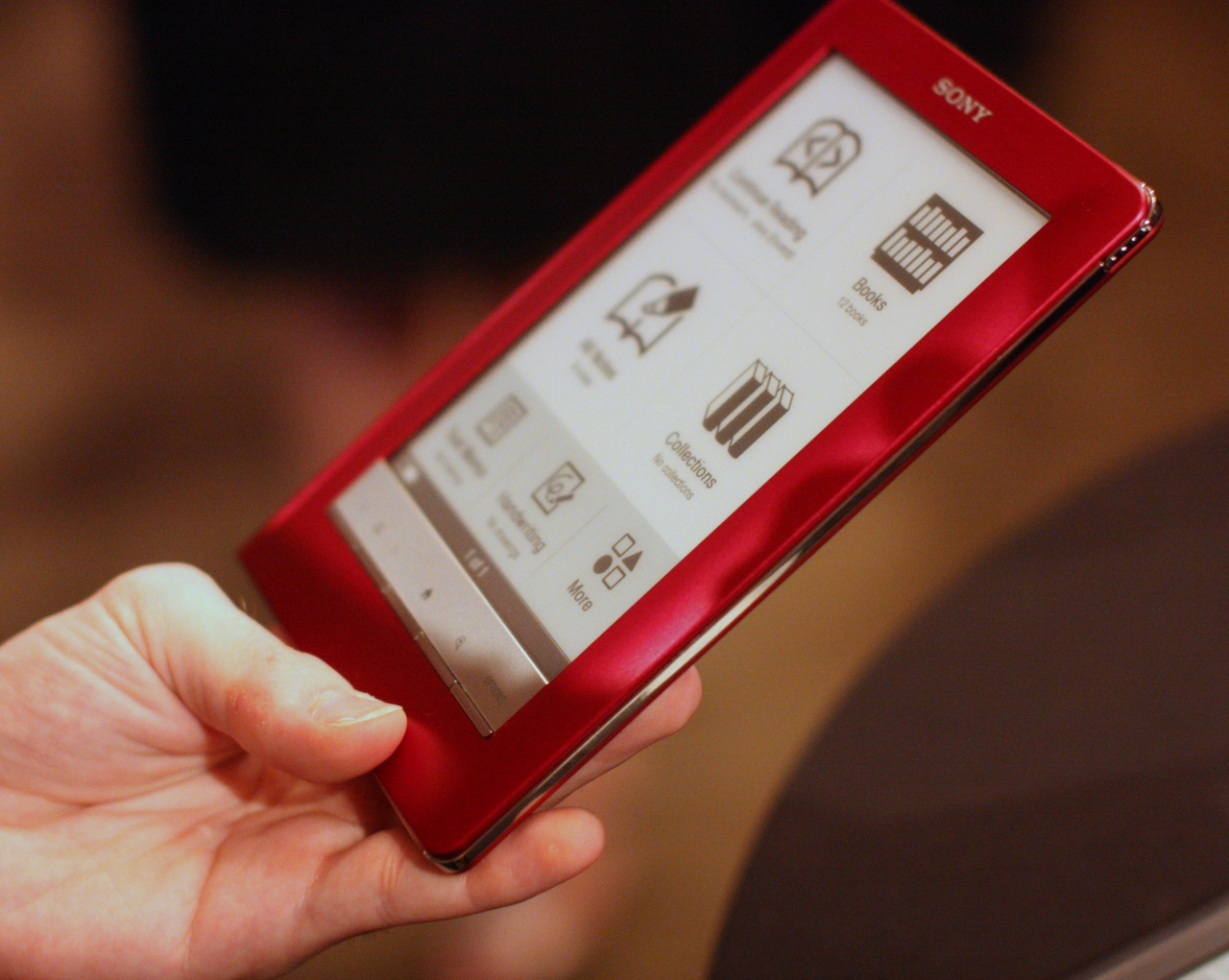SONY goes "Open Kimono" with sexy new e-Readers

There's no doubt that SONY's new line of e-Readers with their affordable price tags and polished industrial design has sex appeal, technology mojo and excellent brand identity. But will they give Amazon a run for the money? My gut instinct on the new "Open Kimono" strategy SONY is embracing says yes. (Photo: Jason Perlow)
As covered by ZDNet Assistant Editor Andrew Nusca in his Live Blog today, SONY announced the immediate release of two brand new e-Readers, the "Touch" and the "Pocket", as well as pre-announcing for the holiday season a larger format, 3G wireless-enabled 7-inch "Daily" that will compete with Amazon's Kindle DX.
Click on the "Read the rest of this entry" link below for more.
Sony's $299.00 6-inch "Touch" (PRS-600BC), $199 5-inch "Pocket" (PRS-300SC) and 7-inch $399.00 "Daily" e-readers (non-working prototype shown) will ship in several colors and have high-quality brushed metal casings.
I see the introduction of these new e-Readers as sort of SONY's "Perestroika" or Gorbachev moment. Traditionally, the company has always made well-engineered products with excellent industrial designs, so I expected nothing less from the company in terms of how well these units were built and how polished their user interface was. Indeed, the new SONY readers are slick devices that feel like premium products when you use them, much like the feeling of when you handle something like, well, an Apple product, for lack of a better comparison.
But unlike Apple, and unlike Amazon, SONY's readers are both premium in build quality and embrace open standards. Rather than choosing to continue on with their own proprietary BBeB file format that they have used in the past with their PRS-505 and PRS-700BC, of which these new readers are the evolutionary successors and use nearly identical software to the previous generation, the company has decided to move its e-bookstore to the EPUB standard.
TechVI.com Video with Jason Perlow: Sony Unveils New e-Readers
EPUB was developed by the International Digital Publishing Forum (IPDF) which several other online e-book stores use, including Barnes & Noble (which announced support for the format in July and will be partnering with Plastic Logic on a device) and CoolerBooks.com which also sells its own COOL-ER reader device. Other stores compatible with the new devices will include Net Gallery, BooksOnBoard, Powell's and The American Booksellers Association.By moving to EPUB format users of the SONY devices will be able to shop at e-bookstores other than SONY's if e-books are priced competitively elsewhere, hence their new "Muliple Stores, Multiple Devices" strategy.
With the announcement of the new models, SONY is also partnering with the New York Public Library which will offer 40,000 free e-books for download or e-lending. The new devices will support Adobe's DRM for commercial EPUB e-books and will be capable of reading a number of other file formats including PDF.
[UPDATE: Version 3.0 of SONY's e-book Library desktop software was made available today for PC and Mac (new platform support). SONY's online e-book store will also now include a "Library Finder" which will allow users to "check out" ebooks for lending from their local libraries. "Checked out" ebooks wil expire in 21 days.]
Gallery: SONY Unveils Trio of e-Readers
The biggest takeaway of all of this is that the XML-based EPUB standard is Open Source so the tools to build books in this format are widely available, which paves the way for self-publishers or online content creators to open their own e-book stores or offer up free EPUB content for download.In addition to the EPUB authoring software, The SONY readers already have a strong ecosystem of conversion tools, including Calibre, an Open Source and multi-platform e-book and content conversion tool for Windows, Mac and Linux. In addition to the DRM-free versions of EPUB and other file formats, Calibre can also be used to convert web sites and personal documents over to the DRM-free Mobipocket (MOBI) format that the Kindle is also capable of reading.
With the limited time I've had to spend with the units this morning I can only say that I think that from a hardware perspective they are on par or superior to what Amazon and other companies are currently producing with competing devices.
With the new devices, SONY has ditched the back-light on previous models and has opted for a similar Vizplex e-ink display to what the Kindle uses, and has constructed the devices out of sturdy aluminum alloy as opposed to the Kindle's plastic which is less durable.
From my limited observance of the devices at the launch, SONY has retained the same user interface from both the PRS-505 and the PRS-700, which already in my opinion was superior to Kindle's Java UI, and also has retained the SD and Memory Stick expansion slots from the previous models. While the new SONY units have less internal memory than Kindle (512MB as opposed to Kindle's 3GB to 5GB depending on the model) 4GB and 8GB SDHC cards are very inexpensive. I'd rather have removable and expandable storage than fixed storage if given the choice.
I hope to have some evaluation units in shortly so I can spend some quality time with them and give you a more thorough review.
Does SONY's "Open Kimono" stance on e-books improve its chances of gaining consumer and content creator adoption? Talk Back and Let Me Know.
